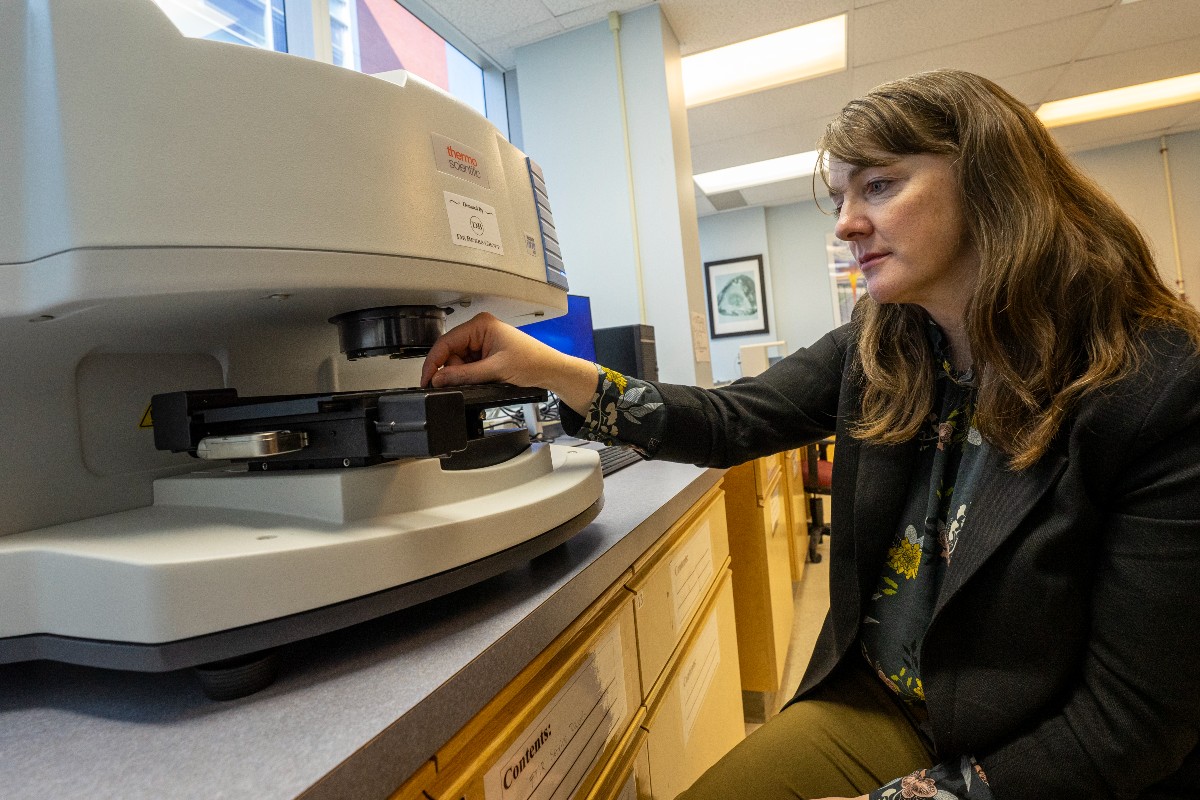De Beers donation funds foundational tool to help train next generation of earth scientists
Donna McKinnon - 28 September 2023
As a world-leading research institution, the University of Alberta researchers who are educating the next generation of scientists rely on industry-specific tools and facilities to provide rich learning experiences for their students. Many of these tools are prohibitively expensive and some are subject to obsolescence as the technology advances.
In diamond research, the Fourier Transform Infrared (FTIR) spectrometer measures impurities such as nitrogen in the diamond to determine the temperature and depth at which it was created in the earth’s mantle — an indicator of the diamond’s type and age. It is an essential tool for research and in particular, student training. In Thomas Stachel’s classrooms, it is a ‘bread and butter’ instrument, crucial to the development of young geoscientists.
“For diamond studies, it’s a key technique because it's non-destructive,” says Stachel, Canada Research Chair in Diamonds and researcher with the U of A’s graduate training program Diamond Exploration Research Training School (DERTS). “Essentially, the micro-FTIR is part of every student project as soon as they first get their parcel of diamonds. They use the infrared spectrometer to measure the characteristics, the impurities and what form they take, the water, the hydrogen, boron, all sorts of other things. It’s highly computerized and compact and really quite nice to use. It’s a bread and butter instrument in my lab — the first step of investigation.”
The original FITR was first acquired in 2003 thanks to a donation from De Beers Canada, and when Stachel was no longer able to purchase replacement parts for the device, he reached out to De Beers for funds to purchase an updated instrument.
Over the years, the De Beers Group, the world's leading diamond company, has been a significant contributor to diamond research at the U of A, including the De Beers Laboratory of Diamond Research, which forms part of the U of A’s Diamond Research Group and is the only FTIR facility in Canada. Since 2003, De Beers has contributed more than $200,000 for the diamond research lab and to support a variety of research programs.
“The De Beers lab has played a vital role in the training of students — over 40 honours and graduate students (with over a third now employed in mineral exploration) and postdocs in diamond analysis,” says Stachel. “Research carried out in the lab led to nearly 100 journal publications and a number of collaborative projects with industry, principally with De Beers.”
Stachel initially requested $120,000 CAD, the estimated cost of the micro-FTIR, but when De Beers learned that the actual price was higher than anticipated, the company did not hesitate to provide full funding for the new instrument, a gift of $152,000 CAD.
“De Beers Exploration has had a decades-long productive research collaboration with professor Stachel,” explains Leyla Lavenir, Senior Exploration Manager – North America, De Beers Group, adding that the Fourier Transform Infrared spectrometer is a “fundamental instrument” for this type of research.
“It’s used in the characterization of diamonds to unravel the time and temperature conditions during their sojourn deep in the earth’s mantle. De Beers provided funding for a replacement spectrometer to enable the department to continue to undertake cutting-edge diamond research and train further generations of earth scientists.”
“We very much appreciate how student training and research at the U of A has benefitted from our long standing and very fruitful association with De Beers,” says Stachel, who began installing and calibrating the new instrument once classes ended in April.
Canada is a major player in global diamond mining, and is the world's third largest diamond producing country by value at $2.21 billion annually. In 2022, Canada’s operating diamond mines recovered 16 million carats of rough diamonds. Diamond research conducted at the U of A has been groundbreaking, thanks to government and industry support.
A recent U of A study on ‘superdeep’ diamonds provided new insight into the geological processes that form mountains, oceans and continents. Stachel, who served as a collaborator on the study alongside fellow earth and atmospheric studies professor Graham Pearson, explains that researchers would have used the FTIR to rapidly prescreen for superdeep diamonds, but stresses that the spectrometer is less about innovation, and more about training and enabling day-to-day operations.
“That’s why I say, ‘bread and butter’, which is the opposite of innovation,” says Stachel. “Once in a while you do make an innovation, but primarily it’s a tool. A tool that has existed for a while and is incredibly useful.”
